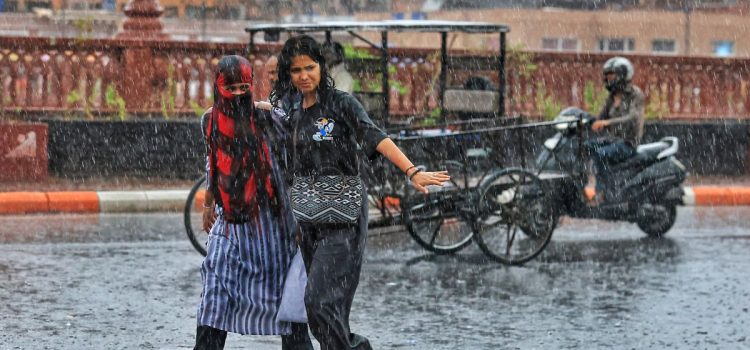
Close to half way through the monsoon season (June-September), a third of the 738 districts in the country have received ‘deficient’ rainfall, while overall rainfall has been 8% above the benchmark or at ‘above normal’ level. This represented a wide regional disparity in rain distribution.
What IMD says?
According to India Meteorological Department (IMD), 236 districts, mostly across Andhra Pradesh, Bihar and north-eastern states, have received ‘deficient’ rainfall against the benchmark while the rest have so far received precipitation in ‘normal’ to ‘excess’ ranges.
Overall rainfall between June 1 and July 27 stood at 440.2 mm, which is 8% above the long-period average (LPA) for the period or ‘above normal’ range.
Among regions, central India (26%), northwest (20%) and south peninsula (3%) have received surplus rainfall so far while east and north-eastern regions have received deficit rainfall of 23% against the benchmark.
In its forecast on Sunday, the met department has predicted heavy rainfall over north-east India, Gujarat region, east Rajasthan, west Madhya Pradesh, Saurashtra, Kutch, Tamil Nadu, south interior Karnataka and coastal Karnataka over next one week.
Meanwhile, water levels in India’s 161 major reservoirs surged over 60% of capacity as on July 24, 2025 as per Central Water Commission. The water levels were up over 59% on year, and 53% above the last ten-years average for this point of time.
While, farmers have completed sowing in 65% p of the normal area of the nearly 1,09.7 million hectares as of July 18 in the current kharif season. Overall, the kharif crops – paddy, pulses, oilseeds, sugarcane, cotton and coarse cereals have been up 4% on year.
“Rainfall in July, 2025 may exceed 106% of the benchmark long period average (LPA) while in June, overall rainfall was 109% above the benchmark or at “above normal level”, Mrutyunjay Mohapatra, director general, IMD, had stated in its forecast for the month.
The monsoon officially set in over the Kerala coast on May 24, eight days ahead of its normal onset date of June 1—making it the earliest onset in 16 years.
Typically, the southwest monsoon, after setting over Kerala in early June, covers the entire country by July and begins its withdrawal from northern India around mid-September.
Previous forecast
In May, the IMD reaffirmed its earlier forecast of ‘above normal’ monsoon rainfall at 106% of the LPA for June–September, while noting that June could see “excess” rainfall.
According to the department, there is a 90% probability of rainfall being in the “normal-to-excess” range during the four-month monsoon season.
In 2024, rains were 108% of the benchmark or above normal level, according to the IMD making it the best monsoon in four years.
The IMD classifies ‘normal’ rainfall between 96% and 104% of LPA. Rainfall between 90%-95% is considered ‘below normal’ while precipitation below 90% of LPA is termed ‘deficient’.
Rainfall in the range of 105-110% is considered ‘above normal’. The LPA is average rainfall received during 1971-2020 at 87 centimetres.











